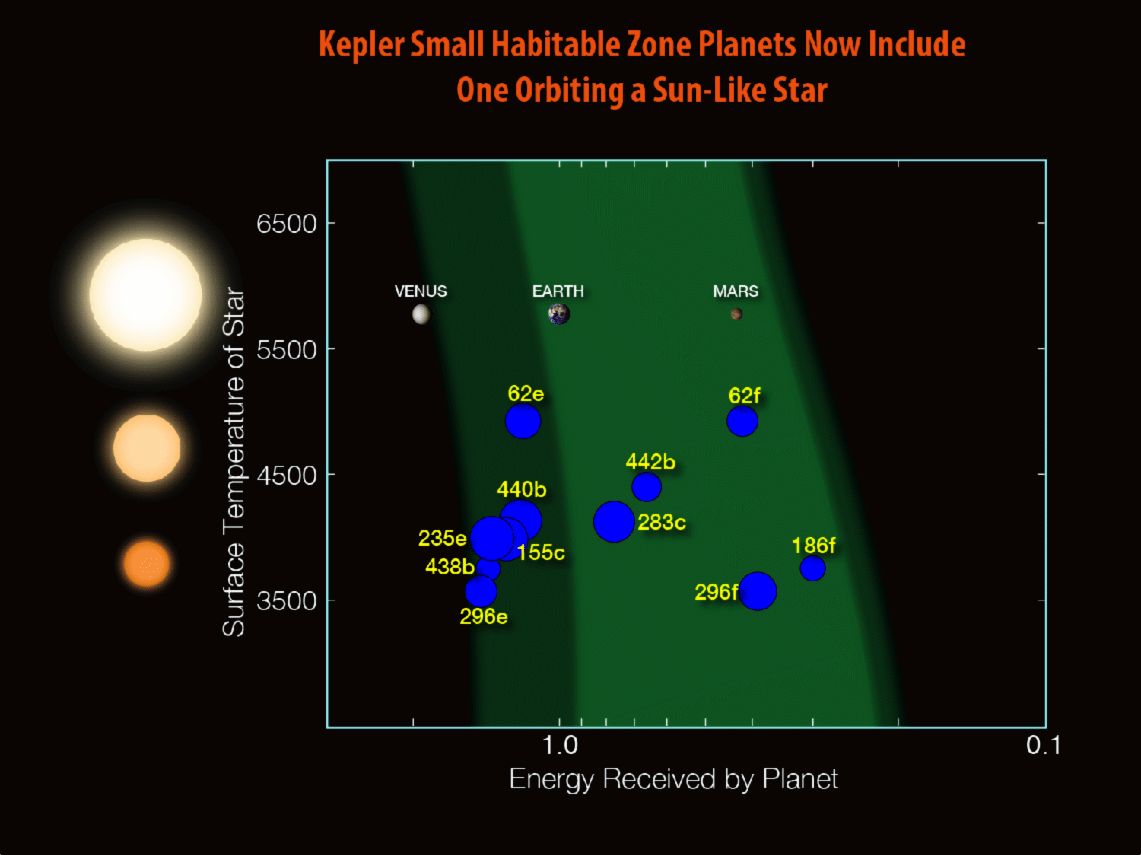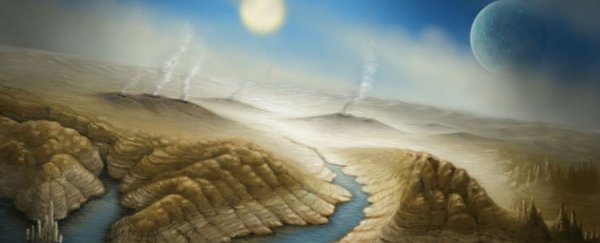As you're probably well aware, a few hours ago, NASA and SETI announced the discovery of Earth's "older, bigger cousin". Called Kepler-452b, it's the first almost-Earth-sized planet that's been found in the habitable zone of a star very similar to our Sun, and the Internet is kind of freaking out about it.
During the briefing, the scientists also announced the discovery of 11 other habitable planet candidates, so what's so special about Kepler-452b? Well, we're glad you asked, because there's quite a lot. For starters, this is our best candidate so far for an 'Earth 2.0', and it could also be the ideal place to look for extraterrestrial life.
Here's everything we know so far:
- Kepler-452b is orbiting a star called Kepler-452, located 1,400 light-years away in the Cygnus constellation of the Milky Way.
- The planet is 1.6 times bigger than Earth.
- Earlier research shows that planets of this size "have a good chance" of being rocky, just like Earth.
- Kepler-452b is orbiting a G2-type star, like our Sun.
- The planet is in the habitable zone, which means that it's far enough away from its sun that its water won't evaporate, but close enough so that it won't freeze.
- A year on Kepler-452b lasts 385 days, so the planet is only 5 percent further from its star than Earth is from the Sun.
- The planet is likely to have an atmosphere, lots of clouds, and possibly active volcanoes.
- Its parent star Kepler-452 is 6 billion years old (1.5 billion years older than our Sun).
- Kepler-452 has the same temperature, and is 20 percent brighter, and 10 percent larger in diameter than our Sun.
- Because it's orbiting a larger star, it's likely to be slightly warmer than Earth.
All of this is pretty damn exciting when you consider the fact that NASA has spent decades searching for a potential new home for humanity, but some of these points are worth highlighting further.
For starters, the fact that Kepler-452b is orbiting a G2-type star is hugely important, because all the other Earth-sized planets that we've found so far are orbiting stars that are cooler and smaller than our Sun.
 NASA/JPL-CalTech/R. Hurt
NASA/JPL-CalTech/R. Hurt
And then there's the age of its star, which is 1.5 billion years older than our Sun, meaning it's had a lot longer for any potential life to evolve.
"It's awe-inspiring to consider that this planet has spent 6 billion years in the habitable zone of its star; longer than Earth," Kepler's lead data analyst, John Jenkins, said in a press release. "That's substantial opportunity for life to arise, should all the necessary ingredients and conditions for life exist on this planet."
We should step in here and make it clear that we still know very little about Kepler-452b, and have no way of saying for sure whether it's habitable at this point. The planet was discovered the same way that pretty much all exoplanets are - by the Kepler spacecraft monitoring the slight 'dip' in the brightness of its star as it passed in front of it.
This has been followed up with ground-based observations from telescopes in the US, which is why we know so much about the brightness of the planet's host star, and the potential nature of the planet. The results have been submitted for publication in the Astrophysical Journal.
But given the fact that Kepler-452b 1,400 light-years away, we're going to need much stronger telescopes than we have right now to actually see the planet, and get some insight into what's going on there. And fortunately, we're about to get one that will be perfect for the job - the James Webb Telescope.
The successor to the Hubble Space Telescope is scheduled to launch in October 2018, and will be 100 times more powerful than Hubble, making it capable of seeing events that happened in the Universe 13.5 billion years ago.
During the briefing, NASA explained that it plans to use the telescope to perform an atmospheric analysis of Kepler-452b, providing us with some important information on just how habitable it really is. And we're so damn excited to see those results.
In the meantime, I guess we should work on figuring out how we might be able to get to our potential new home. Warp drive, anyone?
While we may not yet know enough to say whether Kepler-452b is habitable or not, we'll leave you with this NASA gif, which perfectly sums up why this news is worth getting a little hyped-up over (hint: the green band signifies the habitable zone).
 NASA Ames/N. Batalha and W. Stenzel
NASA Ames/N. Batalha and W. Stenzel
